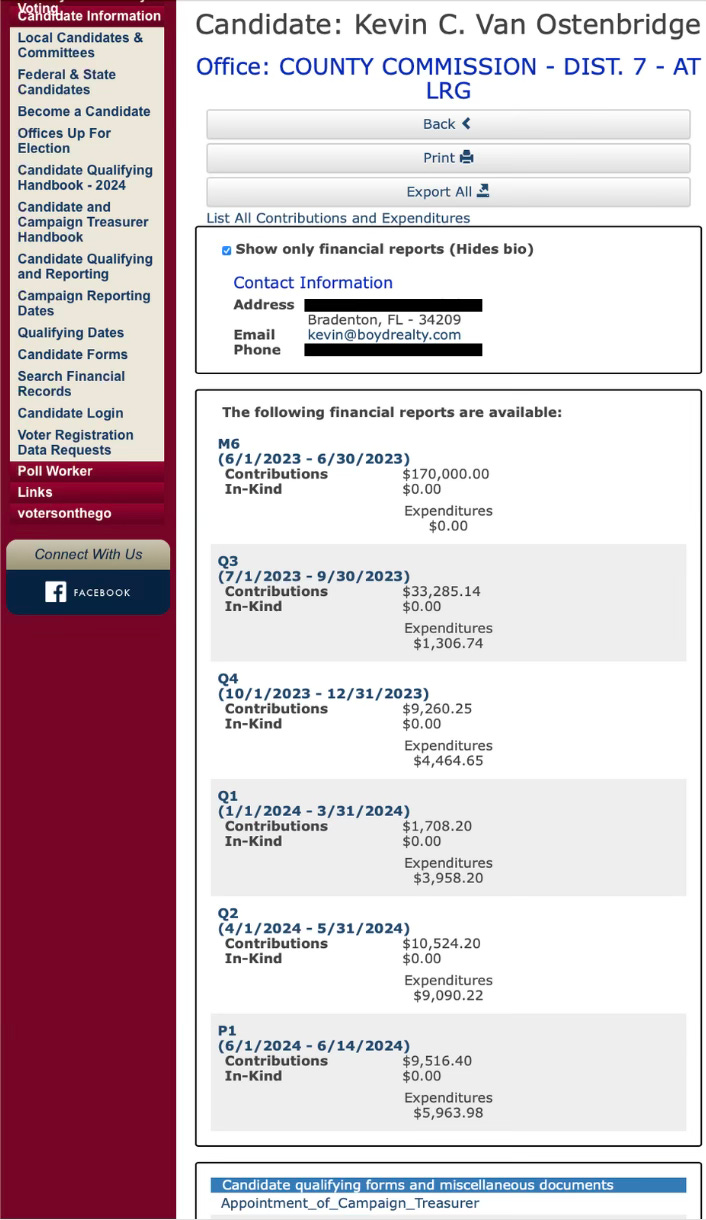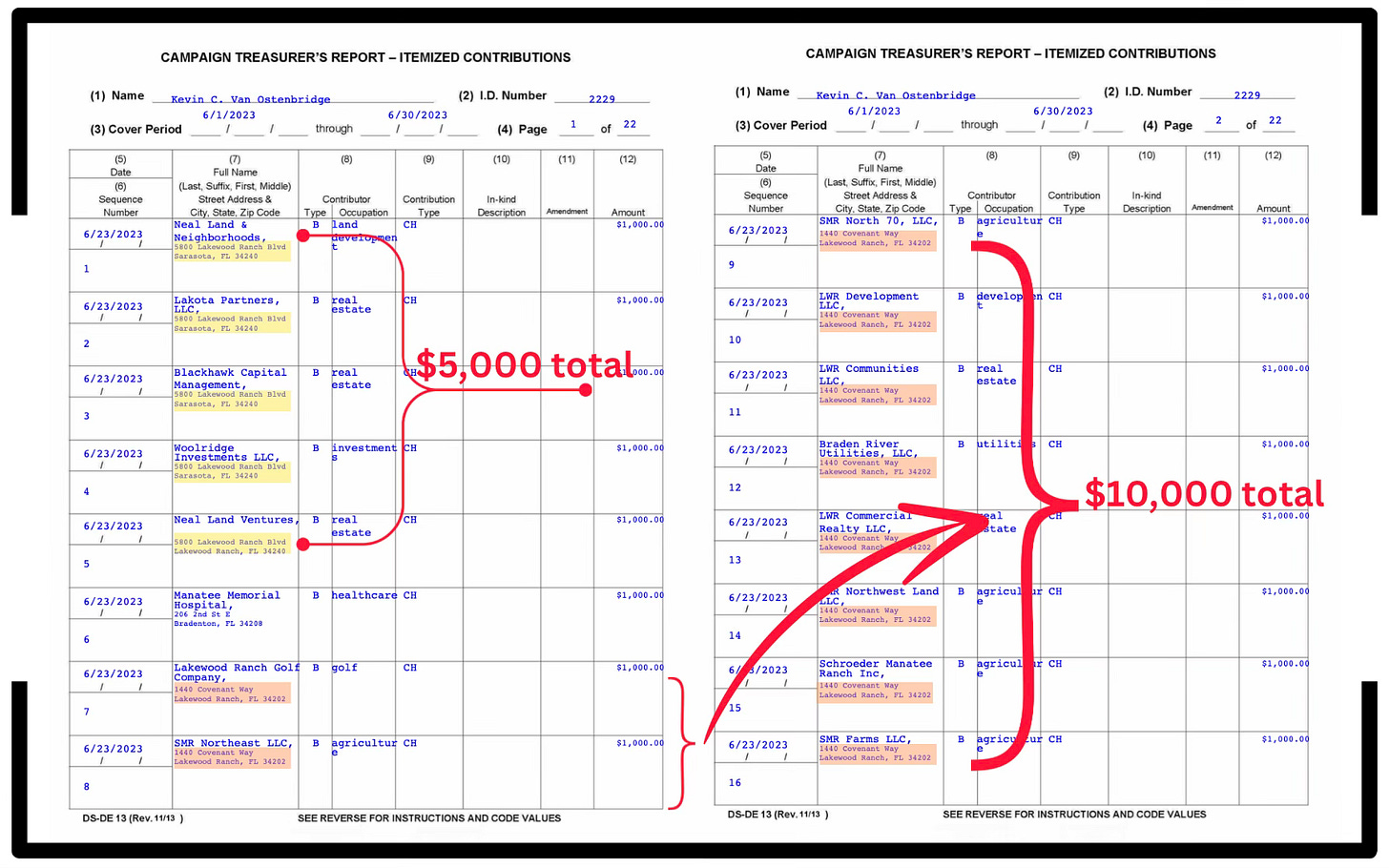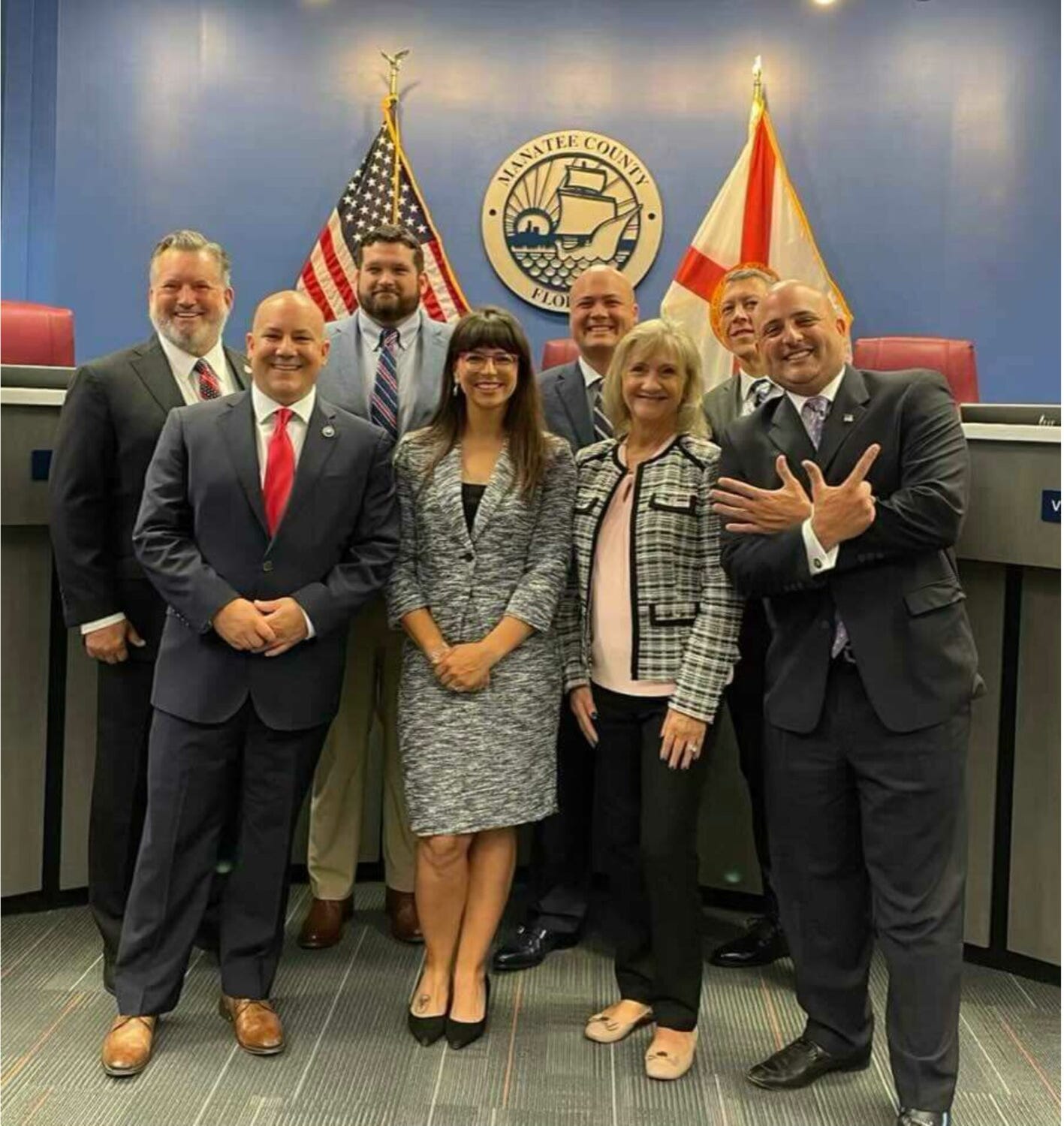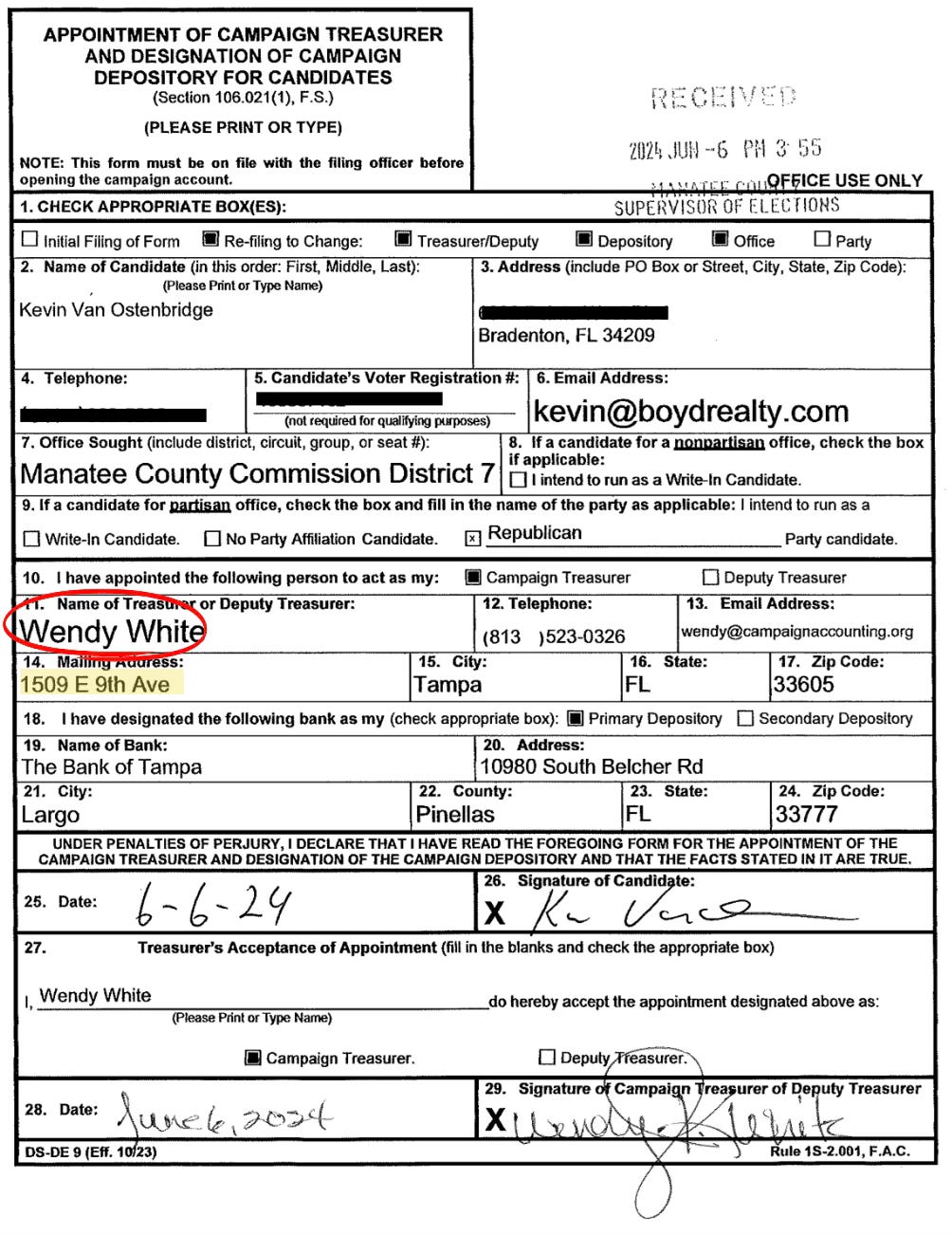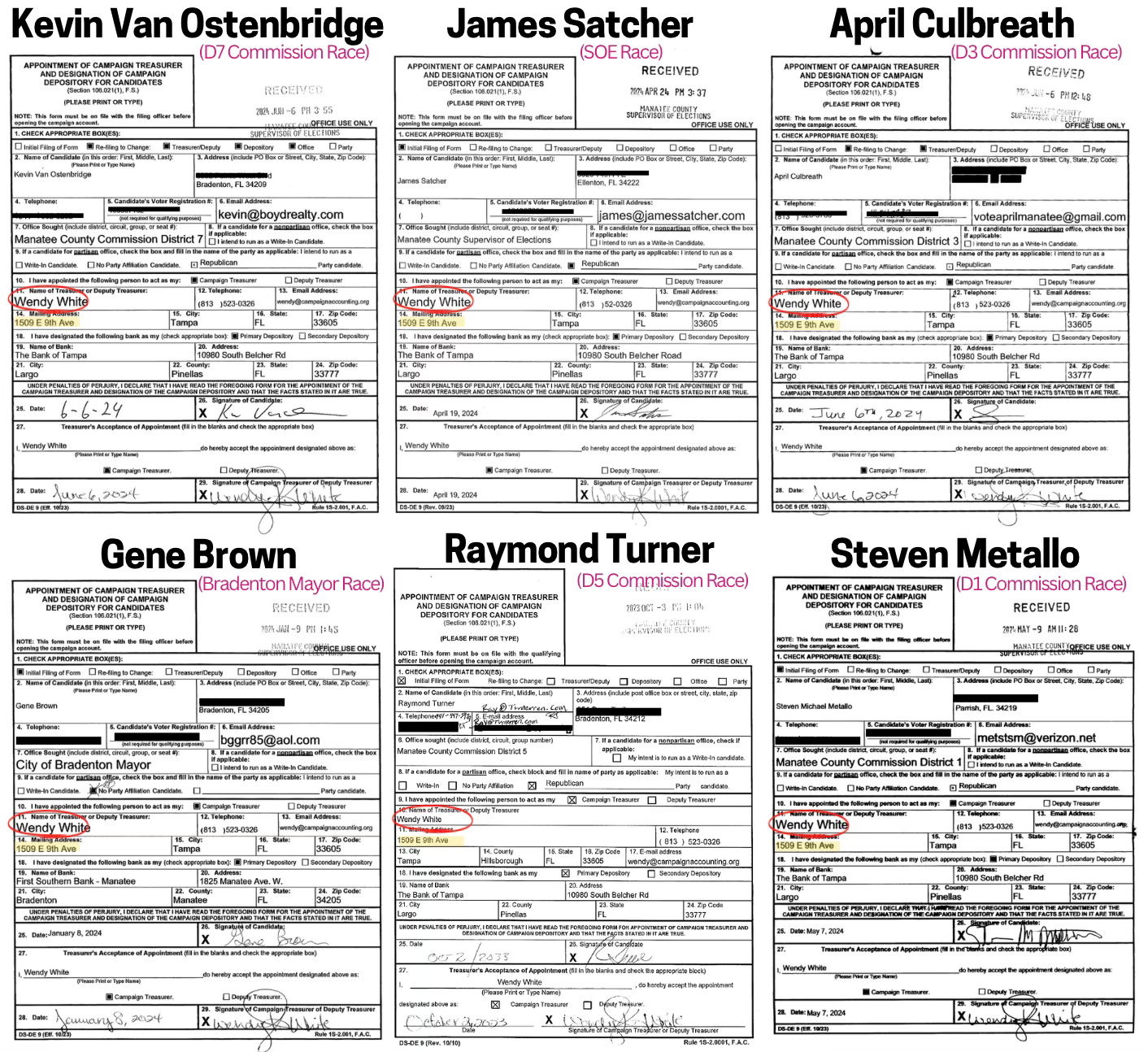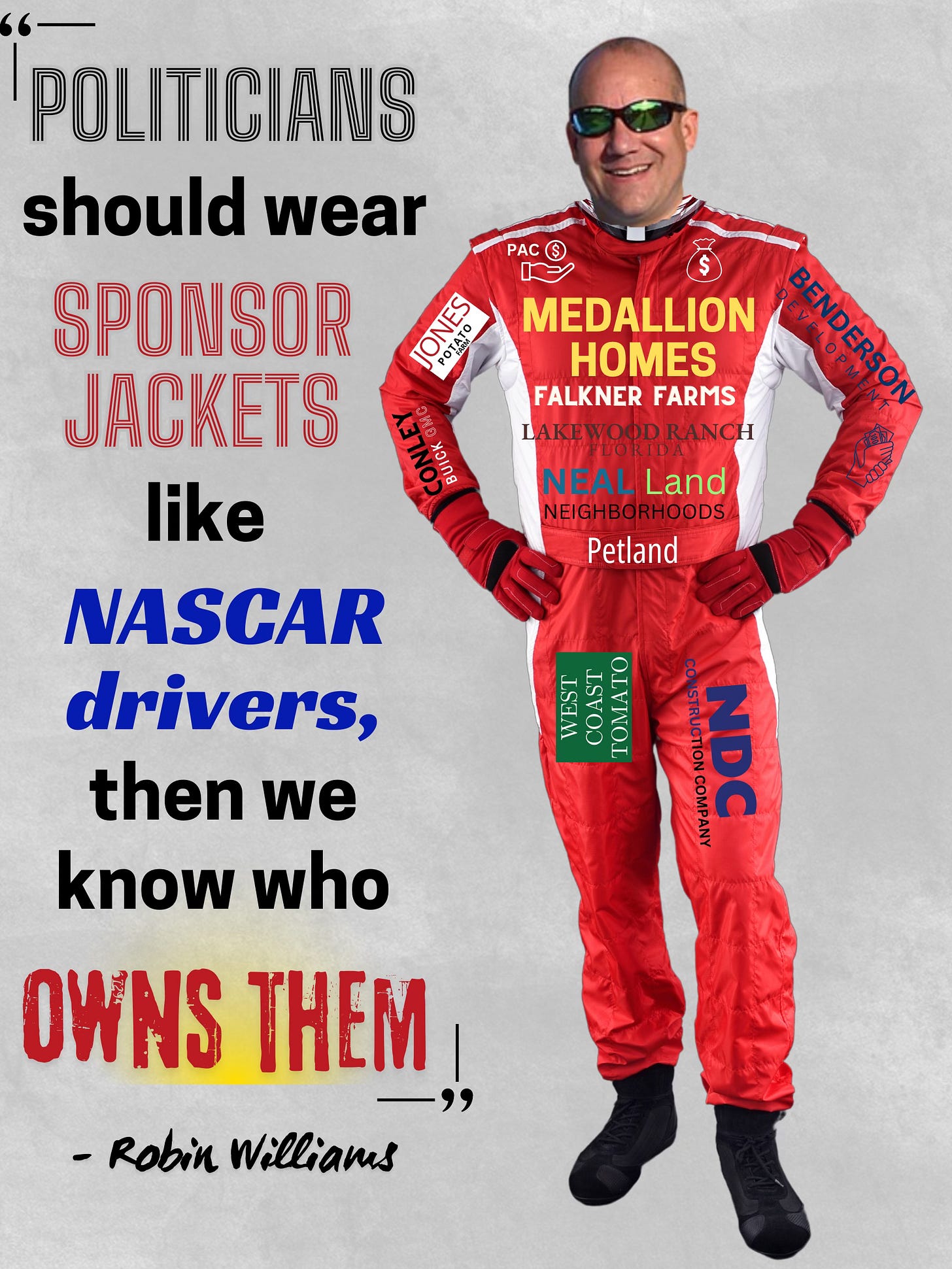Identifying the Developer-Backed Candidates
Our community is increasingly concerned about the growing influence developers have over local politicians and our county. But how do we know WHO developers are funding this election cycle?
Trust, but Verify
You are going to be bombarded with voices telling you who to vote for and what to believe this election cycle. Our goal is to empower our community to verify information for themselves. Identifying the financial backers of local candidates is straightforward and easy to do online.
1. Become Familiar with the Supervisor of Elections Website
The Manatee County Supervisor of Elections’ website is: www.votemanatee.gov. On the homepage, select the “Candidate Information” tab from the list of the left side of the screen. Then select “Local Candidates & Committees”.
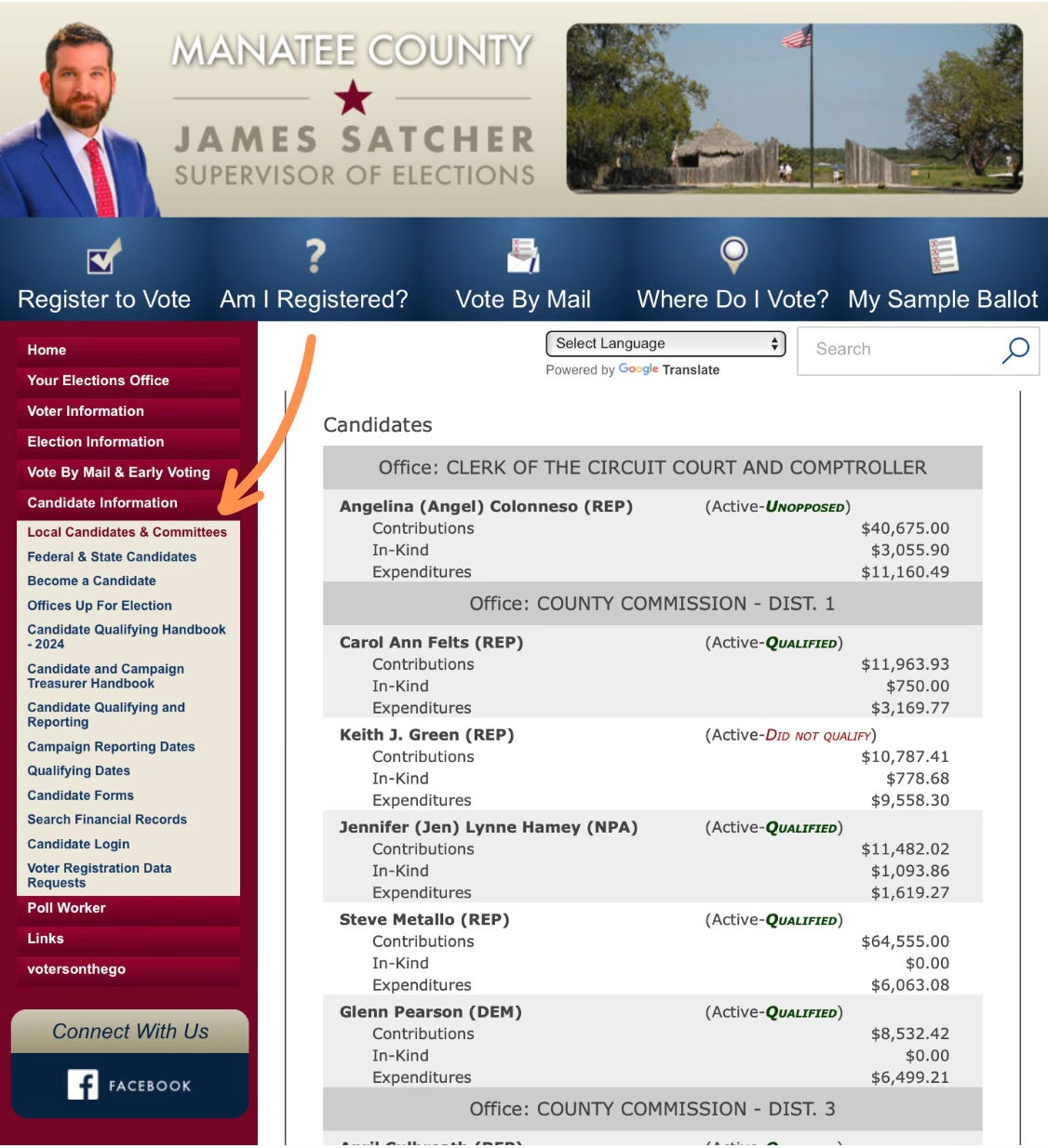
This brings up all the candidates for each local government race, from county commissioners to constitutional officers and CDD boards. To view a candidate’s financial statements, simply click on one of the names.
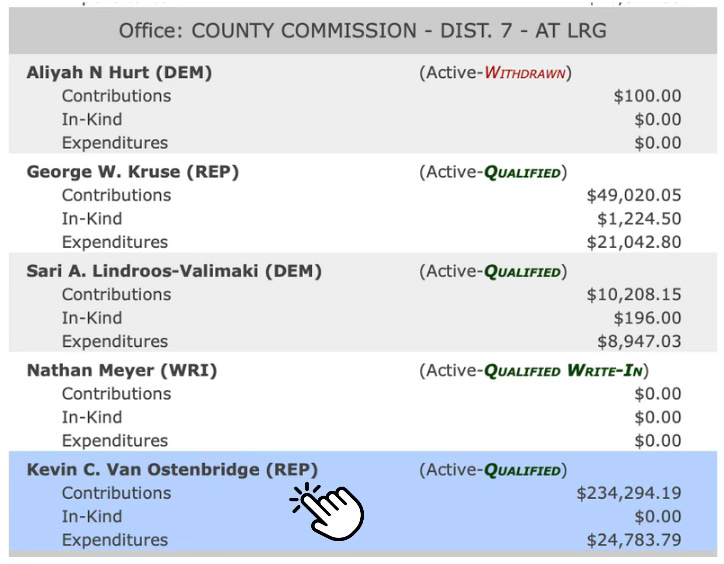
2. Deciphering Candidate Financial Reports
Only two candidates as of this writing have raised six figures: Sheriff Rick Wells (with $100k) and Commissioner Kevin Van Ostenbridge (with a whopping $234k). Since the District 7 County Commission race is shaping up to be one of the most contentious, and much has already been written on the source of Commissioner Van Ostenbridge’s donations, his financial reports will serve as our example.
Candidates are required to report all donations they receive and submit that information by specific deadlines to the SOE’s office. By clicking the first financial report “M6” available, the SOE website gives an itemized list of each entity that donated to Van Ostenbridge in June 2023.
Florida Statute 106.08 does not allow a person to make contributions in excess of $1000 for candidates for county offices. But… Florida Statute 106.011(14) defines a “person” as “an individual or a corporation, association, firm, partnership, joint venture, joint stock company, club, organization, estate, trust, business trust, syndicate, or other combination of individuals having collective capacity.”
The statute’s allowance of each corporation, individual, organization, etc. to be separate entities when donating means ‘John Doe’ could make a $1,000 donation from himself as well as $1,000 from each additional corporation or LLC he owns, totaling potentially into the tens of thousands.
The loophole, sometimes referred to as "bundling" or "the LLC Loophole," allows donors to give the maximum, allowable amount of $1,000 from each of their subsidiaries or affiliated PACs. Campaign finance reports require the name of the donating LLC or PAC, but not the name of the person behind it. (from TC Palm’s Investigative Report: Florida Elections Loophole Empowers Special Interests)
Special interests regularly use this loophole to pump funds into the campaigns of their chosen candidates. Pulling up Van Ostenbridge’s first report, M6, and selecting “View PDF” at the top will give you a view like this:
The entire record is an excellent example of special interest bundling. But we'll just look at the first two pages. Van Ostenbridge’s first five donations all come from the same address. Instead of Neal entities being capped at one $1,000 donation, they are able to give $5,000 in donations on the very first page since they have a multitude of subsidiaries. Next we have ten more $1,000 donations from SMR-affiliated companies.
In fact, a close examination of Van Ostenbridge’s first financial report shows that a bulk of his 170 $1,000 donations from their first report were bundled (multiple donations from the same addresses).
Of the 170 separate donations received, little more than two dozen came from a unique mailing address that was not associated with another donation under a different name… Many of the cluster contributions—separate $1,000 maximum donations sharing the same address but different business names—are from established local developers. TBT was able to identify at least 10 such contributions from Medallion Homes developer Carlos Beruff and a minimum of 10 from Benderson Development. Neal Land & Neighborhoods had roughly twenty separate donations with matching addresses, and SMR Lakewood Ranch had at least another ten in the mix as well. (from The Bradenton Times’ Reporting “A Closer Look at Van Ostenbridge's "Record Breaking" Fundraising”)
3. The Other Clues: PACs and Anthony Pedicini
Political Committees / Political Action Committees (PACs)
Dissecting candidate financial reports is time consuming. But there are other clues to look for on the SOE’s website to see who is receiving special interest dollars. Political action committees (PACs) are also permitted to make $1,000 donations to candidates. These PACs are frequently used by special interests to funnel even more money to their candidates.
In federal political campaigns, increasing amounts of money are being donated and spent without any public disclosure. Dubbed dark money, this spending originates from nonprofit and corporate entities that by law do not have to disclose their political contributions.
Florida has its own brand of dark money. Here political committees must report their incomes and expenses but do not have to disclose on what the money was spent. Requirements to divulge the purpose of a political committee go ignored. Names, addresses and phone numbers listed on disclosure forms often lead nowhere. So while the requirements here are more stringent, Florida voters can still be left in the dark.
Florida's biggest dark money committees are frequently interrelated, passing money to each other in ways that make the elections process here even murkier. (from Jacksonville Times-Union’s article “Dozens of Florida political committees being fueled by millions in 'dark money')
In reviewing that same initial financial report submitted by Van Ostenbridge, five political committees—all sharing the same address—stand out.
It is clear that the donations Van Ostenbridge has received are predominantly bundled donations from corporations and political committees, not donations from your average American.
Anthony Pedicini of SIMWINS
In November of 2022 all seven of Manatee County’s elected commissioners had used Anthony Pedicini as their political consultant to get elected.
Pedicini first arrived on the Manatee County political scene over twenty years ago campaigning for Bill Galvano who would later go on to be state Senate president. "For better or for worse, I introduced him to Manatee County," Galvano told the Herald-Tribune. But Pedicini did not become heavily invested in Manatee County again until 2018.
A chance meeting in 2018 with County Commissioner Vanessa Baugh drew his attention back to Southwest Florida.
She went on to introduce Pedicini to high-profile players in local politics, like developer Carlos Beruff, and the other winning candidates running for office in 2020 against well-established county leaders.
"The rest is history," Baugh said. (from The Herald-Tribune’s article “'Some call it hardball': Meet the man who transformed Manatee County politics”)
Anthony Pedicini’s connection to local heavyweights like Bill Galvano and Medallion Homes owner Carlos Beruff means his clients have no problems funding their campaigns.
Identifying a Pedicini Client
There are multiple ways to determine whether a local candidate is working with Anthony Pedicini. Some, like current county commission candidates Ray Turner and Kevin Van Ostenbridge, have openly acknowledged using Pedicini as their consultant. Financial reports may also show payments to Pedicini’s political consulting firm, SIMWINS. But the simplest way is to pull up a candidate’s “Appointment of Candidate Treasurer” document located with additional uploaded forms beneath a candidates’ financial report filings on the SOE website. In the case of Van Ostenbridge, four different campaign treasurer documents were filed.
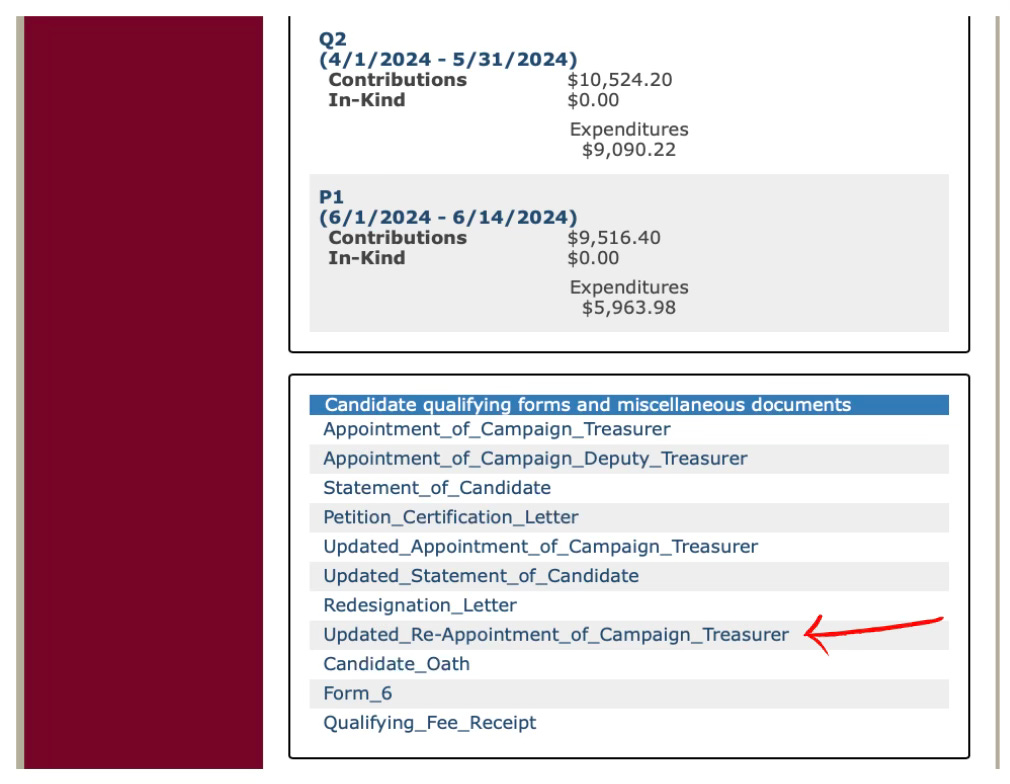
The most recent document, filed June 6, 2024, lists Wendy White as his campaign treasurer. Her address is listed as 1509 East 9th Avenue in Tampa. This also happens to be the mailing address of Pedicini’s SIMWINS office.
A quick glance at the campaign treasurer filings of local candidates shows six are currently using Wendy White, with a SIMWINS address, as their treasurer:
Kevin Van Ostenbridge, James Satcher, April Culbreath, Gene Brown, Raymond Turner, and Steven Metallo are connected to Anthony Pedicini in this election cycle via Wendy White. These same six candidates also have significantly more donations than any of their opponents in their respective races.
In Manatee County, those with the most in their campaign coffers are typically the ones being funded by special interests. The past few years have shown Manatee County that when Pedicini is the consultant behind our commissioners wetland buffers disappear, and thousands of homes get green-lit for construction in our watershed, beyond the Future Development Area Boundary (FDAB), and surrounding our racetrack. Is it “we the people” who these commissioners are representing or the special interests responsible for the bundled donations that propelled them to victory in our local elections?
Transparency and Accountability Matter
Researching each candidate running for local office may not be feasible all the time. But knowing how to navigate the SOE’s website and examine the candidate’s own filings allows you to verify what others might say. We wish it was easier. Knowing the identity of donors and amount of donations matters.
We the People deserve to know who is spending money to influence our vote. Transparency and accountability in campaign finance are important to give us assurance that our elected officials are untainted by the reality or appearance of corruption. In a perfect world, candidates and elected officials would wear their sponsors on their sleeves. And based on Kevin Van Ostenbridge’s financial reports, he’d look something like this.




